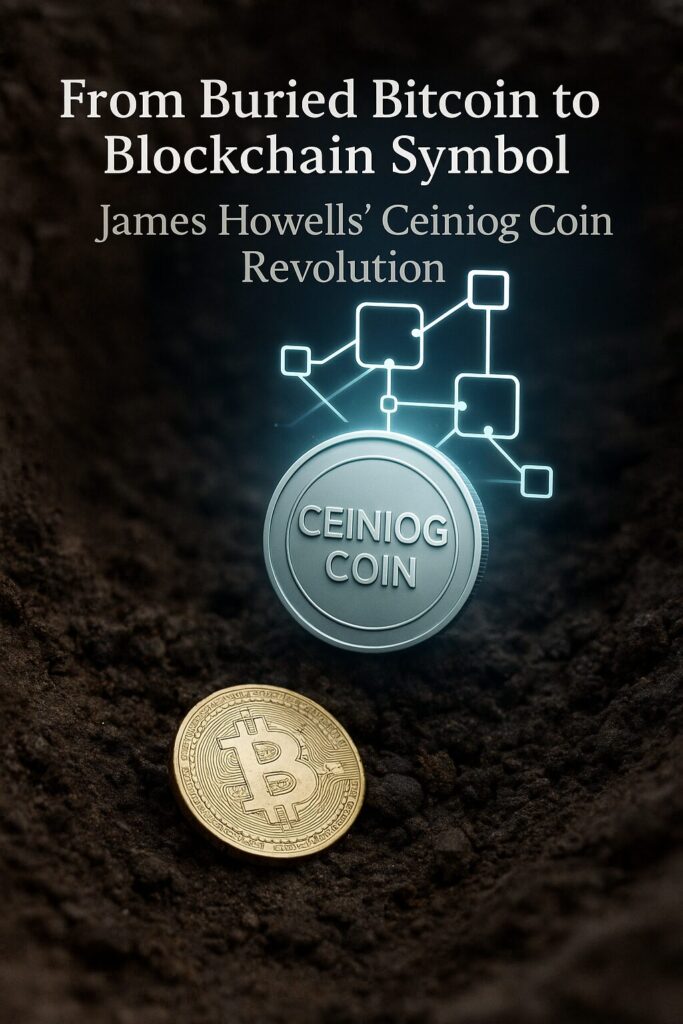
Main Points:
- Twelve-year quest abandoned: Legal, technical, and environmental hurdles shut down excavation efforts.
- Tokenization pivot: Introduction of “Ceiniog Coin” as a DeFi layer-2 on Bitcoin, anchored by narrative scarcity.
- Tokenomics and network: Fixed supply mirroring 8,000 BTC theoretical value, with staking and yield features.
- Expert skepticism: Analysts label it a “meme coin” lacking true claim to lost assets.
- Media and entertainment partnerships: Documentary and podcast deals to monetize the saga.
- Future outlook: Community reactions, regulatory considerations, and the role of conceptual asset representation.
The Long Road to the Landfill
In 2013, James Howells, a Welsh IT engineer, accidentally discarded a hard drive containing 8,000 BTC while cleaning his Newport home office. At the time, Bitcoin traded at under $1 per coin; today, the lost stash would be worth roughly $915 million, based on a spot price of $114,000 per BTC. This misstep has become a cautionary tale about self-custody risk in cryptocurrency.
Howells’ initial approach combined private funding offers—including a £25 million (≈$33.3 million) bid to purchase the landfill outright—with drone-based surveys and proposed AI-assisted explorations. Yet Newport City Council repeatedly cited environmental and logistical risks, blocking every excavation request. In March 2025, the UK Court of Appeal officially dismissed his permit application, with Judge Nugee deeming the endeavor to have “no real prospect of success”.
Legal and Technical Roadblocks
Despite a $620 million damages lawsuit in late 2024, dismissed in January 2025, Howells persevered through eight court appearances, public petitions, and engineering proposals. Each was met with climatic concerns over landfill integrity, high operational costs, and potential health hazards. By mid-2025, the cumulative expense and diminishing likelihood of physical recovery made continued pursuit untenable.
Pivot to Tokenization: Ceiniog Coin Emerges
Faced with insurmountable barriers, Howells unveiled “Ceiniog Coin” (symbol: INI) in August 2025, a DeFi-focused layer-2 network on Bitcoin. Rather than granting any real claim on the buried assets, Ceiniog Coin leverages the “inaccessible vault” narrative as its foundational scarcity mechanism. Holders receive a fixed supply of tokens proportionate to the theoretical value of 8,000 BTC, incentivized by staking and lending modules designed to generate yield within the network.
Howells explains:
“You don’t need access to the landfill. This token is a symbol—an immutable vault everyone can see but none can open.”
Under the Hood: Tokenomics and Layer-2 Network
The Ceiniog protocol plans to issue 800 million INI tokens, each representing 0.01 BTC of narrative value. Smart contracts on a Bitcoin sidechain will handle staking rewards, liquidity pools, and governance voting rights. Initial token distribution will occur via a public presale in September 2025, targeting 20% of supply for early backers and 30% for ecosystem incentives. Howells’ team emphasizes a high-throughput consensus mechanism to enable fast, low-fee transactions, aiming to differentiate from existing Bitcoin Layer-2 solutions.
Community and Expert Reactions
Reactions have been mixed. Blockchain entrepreneur Harry Donnelly labels the recovery prospect “extremely low” and warns that Ceiniog Coin could be perceived as a “meme rather than a true investment”. Conversely, some DeFi advocates praise the conceptual innovation, viewing it as a case study in narrative-driven token value. Social media debates revolve around whether story-backed tokens can sustain long-term utility beyond speculative hype.
Media and Entertainment Ventures
Parallel to the token launch, Howells signed exclusive rights with LA-based Rebel Productions to develop “The Buried Bitcoin,” a multi-format series including a documentary, podcast, and social-media shorts. This deal aims to monetize the human drama behind the lost fortune, ensuring the legend lives regardless of token performance.
Future Outlook for Ceiniog Coin
Regulatory clarity remains a question mark. Without underlying asset backing, INI may attract scrutiny under securities laws in various jurisdictions. Success hinges on network adoption, genuine DeFi utility, and narrative resonance. If Ceiniog Coin can foster a vibrant ecosystem of users and developers, it may set a new precedent for value derived from irretrievable digital assets.
Conclusion
James Howells’ journey—from accidental disposal of 8,000 BTC to conceptual tokenization—illustrates both the pitfalls of self-custody and the power of storytelling in crypto. While physical recovery proved impossible, the pivot to Ceiniog Coin transforms loss into a scalable DeFi experiment. As the token presale approaches and media projects roll out, the world will watch whether myth-driven scarcity can underpin sustainable blockchain value.

